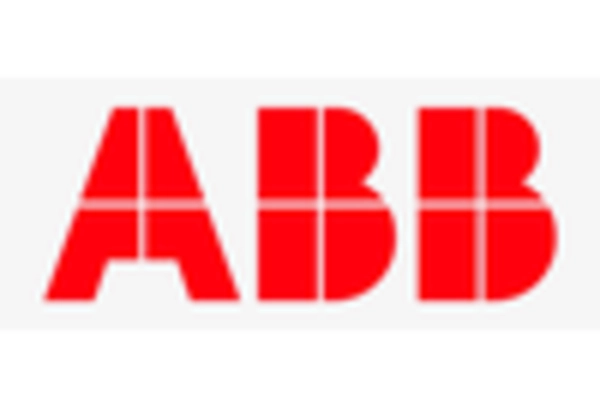Rising Consumer Electronics Market
The brushless dc-motors market is also benefiting from the expansion of the consumer electronics sector in South Korea. With the increasing demand for high-performance electronic devices, manufacturers are increasingly turning to brushless dc-motors for applications in products such as drones, electric bicycles, and home appliances. These motors offer advantages such as compact size, low noise, and high efficiency, making them ideal for modern consumer products. Market analysis indicates that the consumer electronics segment could account for nearly 25% of the total brushless dc-motors market by 2026, driven by innovations and consumer preferences for advanced technology. This trend underscores the importance of adapting to consumer needs in the evolving landscape of electronics.
Growing Automation in Manufacturing
The increasing trend of automation in manufacturing processes is a key driver for the brushless dc-motors market in South Korea. As industries strive for higher efficiency and productivity, the demand for precise and reliable motor solutions is on the rise. Brushless dc-motors are favored for their superior performance characteristics, including high torque and speed control, which are essential for automated systems. The market is projected to grow by approximately 10% annually as more manufacturers integrate these motors into their production lines. This shift towards automation not only enhances operational efficiency but also reduces labor costs, further propelling the demand for brushless dc-motors in various industrial applications.
Technological Advancements in Motor Design
The brushless dc-motors market in South Korea is experiencing a surge due to rapid technological advancements in motor design. Innovations such as improved rotor and stator configurations enhance efficiency and performance, making these motors more appealing for various applications. The integration of advanced materials, such as high-energy magnets, contributes to weight reduction and increased power output. As a result, manufacturers are able to produce motors that not only meet but exceed the performance expectations of consumers. This trend is reflected in the market data, which indicates a projected growth rate of approximately 8% annually over the next five years. The continuous evolution of motor technology is likely to drive the demand for brushless dc-motors, particularly in sectors such as automotive and industrial automation.
Government Initiatives Supporting Clean Energy
In South Korea, government initiatives aimed at promoting clean energy solutions are significantly influencing the brushless dc-motors market. Policies that encourage the adoption of electric vehicles and renewable energy sources are creating a favorable environment for the growth of this market. The government has set ambitious targets for reducing greenhouse gas emissions, which includes a shift towards more efficient motor technologies. As part of these initiatives, funding and incentives are being provided to manufacturers and consumers alike, facilitating the transition to brushless dc-motors. Market data suggests that this support could lead to a 15% increase in the adoption of brushless dc-motors in the next few years, particularly in the transportation and energy sectors.
Shift Towards Sustainable Manufacturing Practices
The brushless dc-motors market in South Korea is witnessing a shift towards sustainable manufacturing practices, which is becoming a crucial driver for growth. As companies increasingly prioritize environmental responsibility, the demand for energy-efficient and low-emission motor technologies is rising. Brushless dc-motors, known for their energy efficiency and reduced carbon footprint, align well with these sustainability goals. Manufacturers are investing in eco-friendly production methods and materials, which not only comply with regulatory standards but also appeal to environmentally conscious consumers. This trend is expected to contribute to a market growth rate of around 12% over the next few years, as businesses seek to enhance their sustainability profiles while adopting advanced motor technologies.

















Leave a Comment